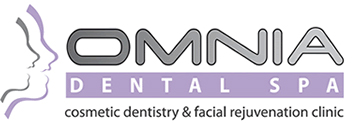Well-known causes of tooth stains are tobacco (tar), strong tea, coffee, red wine and Melanoidins (large discolouring molecules from cooked vegetable oils). Medicines containing iron and heavily coloured foodstuffs can also be a contributing influence. Deposits of tartar (calculus) that form around the necks of the teeth will also pick up unsightly stains that are extremely difficult to remove.
Internal stain
Teeth which have had their nerve removed (dead or non-vital) will always be darker than their live (vital) counterparts. Upper front teeth (incisors) that have taken a heavy knock (trauma) will frequently become discoloured if the blood vessels have been ruptured at the end of the root (apex). If a haemorrhage (bleed) has taken place within the tooth itself (pulp chamber) the usual bruising and healing processes of the soft tissues cannot occur. The blood products break down in the tooth and cannot be taken away by a fresh blood supply. As a result the tooth can become seriously discoloured.
Regular visits to the dentist or hygienist and proper tooth brushing are all an essential part of maintaining good oral hygiene, a healthy mouth and clean teeth.
Bleaching is the use of chemical agents to produce an oxidation of the discolouring molecules within the tooth. It is not a temporary process. A dentist using chemical agents can also remove superficial stains such as tobacco, tea and coffee.
External bleaching
Dentists can bleach teeth externally by applying a bleaching product containing peroxides (usually hydrogen peroxide or carbamide peroxide). It can either be done at the dental surgery or by the patient at home (under the dentist's direction). At-home systems contain lower concentrations of peroxide, usually 3.5 percent. The dentist takes an impression of the teeth to produce a custom-made tray that covers the teeth to be bleached. The tray will hold the bleaching gel against the teeth with minimal contact with the gums and other oral tissues. The tray is worn for several hours, usually at nighttime or when it is most convenient. A course of treatment usually takes two to three weeks. Possible side effects include minor sensitivity of the teeth to heat and cold. These symptoms are usually mild and will quickly ease when the treatment ends.
In-surgery systems usually involve a higher concentration of peroxide, which is used with a powerful dental light unit. Your gums need to be protected using a rubber shield or special paint-on varnish. The procedure takes from 30 minutes to an hour. This is sometimes repeated at subsequent appointments to achieve the maximum effect.
Internal bleaching
When a tooth is discoloured following the death of the pulp, the dentist can carry out internal bleaching after the completion of root canal treatment for the tooth. The bleaching agent is sealed inside the tooth for about a week. It is cleaned out when satisfactory lightening is achieved and a tooth-coloured filling is placed inside the tooth. A very effective method is to combine internal and external bleaching.
Internal and external bleaching
Internal and external bleaching is used to lighten dead (non-vital) root-filled teeth. The procedure involves putting gel inside the tooth by holding the gel inside a mouthguard. It produces very good results.
Teeth with a yellowish hue usually bleach well, brownish ones less so; greyish teeth may not bleach well at all. Discoloured fillings will not improve with bleaching. They will show more if the surrounding tooth structure is bleached and they may have to be replaced. The dentist will be able to tell if bleaching is suitable, or not, and discuss other options such as veneers and crowns for improving the appearance of the teeth.
Whitening toothpastes contain ingredients that increase the effectiveness of superficial stain removal and can prove a very effective measure, if used regularly, to prevent stains gaining a foothold. However, they are unable to alter the intrinsic colour of teeth. All toothpastes contain mild abrasives, which help remove surface stains.


 FREE Invisalign consultations available! Call us today to reserve your appointment
FREE Invisalign consultations available! Call us today to reserve your appointment FREE Boutique Whitening kit with every Invisalign treatment - Love your smile
FREE Boutique Whitening kit with every Invisalign treatment - Love your smile
